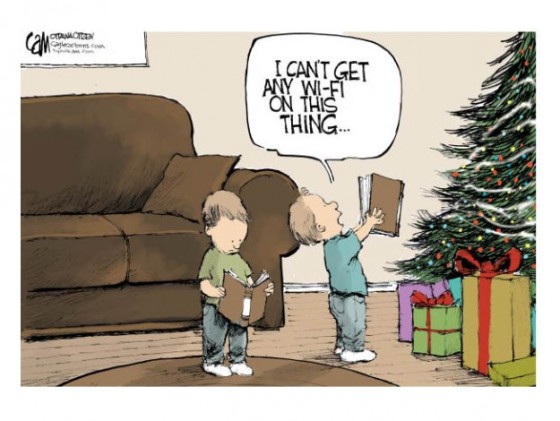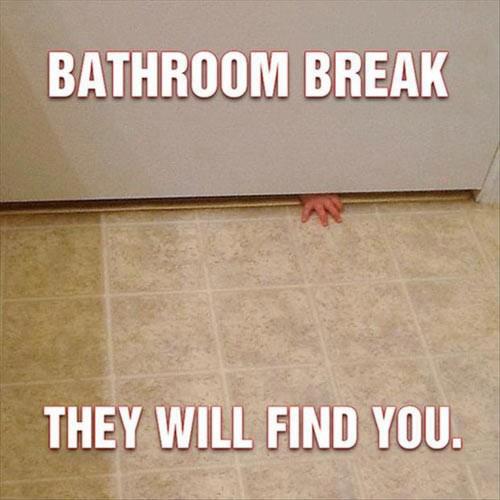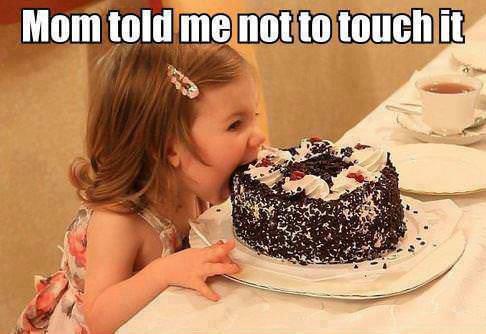by Joanne Wadsworth | Jun 10, 2013 | Author Blog
This is no ordinary beach. Stay tuned to find out what makes this slice of paradise so special.

Let me introduce you to New Zealand’s Hot Water Beach. Above is a picture of one of the most isolated and unusual beaches in the world, and being a Kiwi, I just couldn’t pass up this opportunity to share this magical place with you.
Hot Water Beach is as good as its name. Yes, it’s a beach where if you arrive two hours before or after low tide, you can bring a spade and hollow out a hole which fills with natural hot water. What? It’s true. The hot water actually seeps up from below and through the sand to fill the hole. Those in this picture are just beginning the dig, but I’ve tunnelled out some big holes there in my time, and seriously, once the hard work is done, you simply get to sit back, relax and enjoy what I’d call an exclusive spa experience with a view to kill, and all without having to pay a cent.
This beach has got to be one of my favorite spots. I love taking a dip in the ocean, then warming up afterwards in my very own hot water pool. Yep, gotta love that.
So, how does this phenomenon happen?
New Zealand sits on the Pacific Rim of Fire. I know, that sounds completely scary, but in actual fact it isn’t. It just means we have a lot of deep underground reservoirs of superheated water and with it, unusual geothermal activity like what happens at Hot Water Beach. Here at this beach there are two springs which the hot water escapes up from far below the surface. The water cools on its way up, and once hitting the surface, only comes forth if you dig for it. That’s what makes this beach so unique. A little digging, and the hot water rises. It certainly makes for a wonderful experience if you’re ever in my neck of the woods to come and see.
It’s this uniqueness to my country which is why I use locations like this one in my books. You’ve got to write what you know, and I love bringing readers right here, to the one place in the world I hold close to my heart. So, if you ever want a taste of my country, check out PROTECTOR, and any of my other soon-to-be released novels. They’re all set within New Zealand, The Land of the Long White Cloud.
Here’s what one reviewer said of PROTECTOR’S scene descriptions (which I totally adored.)
“Throughout Protector Joanne Wadsworth does a great job of developing character
and keeping the tension between Faith and Davio high. Her worldbuilding is
packed with magic and fun, and her settings, from the beaches and mountains of
New Zealand to the tumultuous oceans and towering cliffs of Magio, are
breathtaking.”
You can probably see why I like it. Take care and have a fabulous week. If you want to drop a comment, make sure you do. I love hearing from you all.

PROTECTOR > BUY THE BOOK: Amazon / Barnes & Noble / Lyrical Press / iTunes / Kobo

by Joanne Wadsworth | Jun 3, 2013 | Author Blog
Random picture alert! Well, kinda.

Do you feel the cat’s conflict? The little mouse on his ear, I’m sure, went flying one second after this photo was taken. Anyway, keep reading, and check out exactly how we as writers, can create tension and conflict in our first five pages, thereby drawing the reader in. (Sorry about the “thereby.” I’m writing historical romance at the moment, and you might find the odd “aged” word appearing within the passages below.) *chuckles*
Greetings my fellow writersHey everyone,
As writers we sometimes struggle with how our story should begin. We want to craft our first few pages in a way that draws the reader in. The last thing we want is for them to set our book down, to forget it, or to never pick it up again. So here, I’ve compiled a list of techniques to aid the writer in crafting a strong first five pages.
Open with a strong hook.
- The first line of your book is crucial.
- The first paragraph even more so.
- And the first scene has to truly pack a punch.
- So, how do we do this? Consider the main point of tension within your first chapter, and ideally try to work your first paragraph around that issue. The key is to captivate your reader into needing to know more. That means don’t go laying out all the facts, but aim to entice.
- To aid you with this, a great way to open your first page is with dialogue. It’s a method which allows you to introduce your main character and highlight the point of tension all in one go. If the dialogue isn’t in the first line, then try to incorporate it in the first paragraph.
Don’t give me thirty characters in the first few pages.
- If there’s one way to turn off a reader, it’s by confusion. Keep it simple. Spotlight your main characters right away so your reader becomes grounded from the start. Allow your reader to focus on them, to form a bond with them, to be invested in them.
- Never forget that when a writer gives a character a name, the reader will automatically store that name, and expect that character to be someone of importance. That means, don’t go naming your non-important characters, and that goes for the entire book. As an example, the waitress who serves you coffee in the café, can just be the waitress.
You have a clever reader.
- This is something I tell myself all the time, but continuously as I write the first few pages. “I have a clever reader.” It means as writers, we need to allow our reader to piece together the story without our continual input. Sure, give small hints, but don’t tell them everything. That way they’ll have a more fulfilling experience as they read right from the very first page.
Reflections.
- Reflections in the first few pages should rarely be written in. This is where the main characters reflect on their life or past situations. They’re getting deep and meaningful, when really you need to highlight the actual tension and conflict of your story.
- Save the reflections for where they’re needed.
Remember most readers will judge a book by its first few pages.
- Generally readers will peek at the first few pages of a book, and based on what they read, decide whether or not to buy it. That means no grammar mistakes are allowed from the very first line. Proofread thoroughly.
I hope you’ve found these tips and techniques helpful. You may even have your own special tip or technique you’d like to add. Drop me a comment and let me know. I love hearing from you guys.
Take care, and I’ll catch ya next week.

PROTECTOR > BUY THE BOOK: Amazon / Barnes & Noble / Lyrical Press / iTunes / Kobo

by Joanne Wadsworth | May 28, 2013 | Author Blog

Now, this is one other-worldly beach I’d like to visit.
Also, stay tuned, because at the end of the post I’m sharing some exciting news on my latest book submission. 🙂
World-building is a subject close to my heart. As a child some of my favorite books transported me directly into the new world the author had built. This started my love for the fantasy, science fiction and paranormal genres. There’s such a magical element to these stories where world-building occurs, and it’s also the ultimate opportunity for an author to allow their imagination to soar.
This imagination though needs a few parameters to keep the author’s world-building realistic and true. So, here are some crucial pointers for those authors wanting to world-build.
- Firstly, determine whether your new world will be present day, futuristic, medieval, etc, and then keep in context the elements available on this planet to sustain it and your characters.
- World-building takes research. You need to have a basic understanding of physics to ensure your invented planet doesn’t stray too far from the believable. Consider how life will be supported. How the society on your new world looks and acts.
- Are the people human or something else? Maybe they’re based on mythology? Whatever you choose, keep in mind how our own world works. We understand the levels of structure. We care for each other, our planet and the animals we share it with. I’m pointing this out so you don’t go creating a world of people who only care about themselves and no one else. That could only lead to the potential extinction of the race you’ve just created.
- Consider elements of travel. Are there space ships? If there are, what means have you provided to source and build these vessels, and then fly them?
- Perhaps you’ve created magical means of travel. If you have, is time-travel involved? How are you going to incorporate this into the world you’ve built?
- What kinds of laws govern this new world? And how do your characters fit into it? What kind of belief system is there? Are there other languages?
Never forget, that world-building can take a little time and practice to get just right. You’re after drawing your reader into a place that could realistically exist. Anything is possible, but it’s only believable if there are sustainable physics behind it. Lastly, get excited, because there is nothing more intriguing than building a new world and bringing your reader along on an incredible journey far beyond our shores. I certainly love where writing fantasy leads me. Oh yeah, our world is no longer the limit.
Lastly, I have some fabulous news, and I feel just like this puppy. I’m on the ride of my life.
And the news: ENCHANTER, book three in my YA (Magio-Earth) fantasy series has gone under contract with Lyrical Press, NY, with a release date of 5th May 2014. I’m beyond excited to see my series take flight the way it has. There are certainly a number of books still to come, each one featuring a different hero and heroine, and all with your favourite characters intermingled within. Huge thanks to the amazing Penny Barber and Renee Rocco of Lyrical Press. Also, a massive thank you to everyone who crossed their fingers and toes for me, for all your supportive tweets, emails and comments. You guys rock!
I wish you all a week as wonderful as mine has so far been, and if you want to drop a comment, make sure you do. I love hearing from you all.

PROTECTOR > BUY THE BOOK: Amazon / Barnes & Noble / Lyrical Press / iTunes / Kobo

by Joanne Wadsworth | May 20, 2013 | Author Blog

🙂
I love to read, but when I begin a new book, the last thing I want is to be jerked out of the story by continuous grammar, spelling or punctuation mistakes. It’s the first sign that perhaps the book may suffer from other issues, like weak plot or character development.
In the past few years, the need for writers to edit our own work has become more crucial than ever before. Online review sites are taking off, and readers love to share what they enjoyed or didn’t enjoy. Many reviews I’ve read get down to the tiniest detail, and if there’s poor editing, then that becomes a major turnoff. We can certainly edit ourselves until we believe we’ve nailed our book, but there’s nothing quite like a second set of eyes.
Many writers join writers’ groups, have critique partners or request a beta reader to give them solid feedback. There’re also some wonderful freelance editors available. Proofreaders and line editors are another great option.
Which brings me to the reason for this post. Last week, a writer friend said to me she’d like to self-publish her first book. She’s tried getting an agent, but rejection letter after rejection letter keeps coming in. She’s in a writers’ group, but they’re all unpublished authors learning and growing together. She asked me what I thought she should do? Wow, as writers, our journey to publication can be quite different. Self-publishing might be the road she takes, although one thing remains the same for all of us. Our books should be soundly edited before publication, no matter which avenue we choose to take. Her future reputation as a writer is at stake if she doesn’t put her very best forward. I certainly understand her frustration of trying to get that first “yes.” It certainly feels like we’re climbing a mountain, dragging our way uphill, and through hail and snow to get there. But it’s so important not to forget that every published author out there, was unpublished at some point. That makes it feel real. Anything is possible.
So, how important is editing to you? Do you have a critique partner, beta readers or someone else? Who helps you ready your manuscript for submission or publication? For me, my second set of eyes before submission is my sister. She isn’t a writer, but an avid reader. She’s great at providing feedback, although if not for her, I’d certainly team up with a CP. Drop me a comment and let me know what works for you.
Lastly, yay, I finally wrapped up book three in my YA fantasy series and began the submission process on it. Now, I’m crossing my fingers and toes and hoping I did everything I could to make it a fabulous read. I can certainly say it’s well-edited. 🙂
Take care, and I’ll catch ya next week.

PROTECTOR > BUY THE BOOK: Amazon / Barnes & Noble / Lyrical Press / iTunes / Kobo

by Joanne Wadsworth | May 13, 2013 | Author Blog

Cute. 🙂
Authors and publishers have offered free ebooks as a way to capture new readers for a few years. But does it really work? This marketing strategy is one of many used in our industry, and it’s rather intriguing. As a reader, I’ve certainly downloaded my fair share of free ebooks over this past 14 months while I’ve had an ereader. To begin with, I thought wow, this is cool. I get to try out new authors and see if I like their work. My intention was, if I did, I’d go on to buy more of their books.
The only problem with this, is that more and more free ebooks keep coming out. There’s an endless stream. Another problem is, some of those freebies were just plain awful. If I got a couple of chapters into the story and it didn’t capture me, I simply deleted it and began another. I hadn’t invested any money, so no harm was done. Only this got a little monotonous. Of the fifteen free ebooks I’d downloaded, only two were any good. Those are terrible odds, and in a way puts me off from downloading another from an author I haven’t heard of.
As a bonus though, because I’d received them for free, I wrote reviews for those two authors and posted them on Amazon. I felt obligated to ensure they received some sort of compensation for what they’d freely given. Although, I can’t help thinking is what happened to me the same for other readers? To answer my question, I checked out what authors and readers are saying about free ebooks. This information has come from a number of sources, from other authors and readers I’ve chatted to, as well as from reading responses within various group threads on Goodreads.
Here’s the overall feeling on free ebooks.
- Readers are more apt to give a new author a try when they can read their book for free. They’ll happily buy other books if there are any.
- A couple of authors mentioned that some of their free ebooks made it into the hands of readers who don’t enjoy the genre they write. They then left bad reviews stating so, but then that’s the risk an author takes.
- Many readers said they’re more committed to reading an ebook they purchase, over one they receive for free. Freebies get put to the bottom of the pile.
- Readers also found where a free ebook in a series became available, if they liked it, it hooked them into buying other books within the series.
- Authors did report that they sold more books for a short time after their promotion, but then their sales dropped away again and back to normal levels. Because of this, they felt giving away free ebooks is something that should be done once they had a backlist. This marketing strategy would then see those readers who enjoyed their books, perhaps buying others they had available. (Of course, we all know there are some authors who’ve seen incredible success from “free ebooks,” and in some cases, it’s launched their careers.)
- Also, a number of readers said after reading some terrible free ebooks, they’re learnt to check the reviews and the current average rating of any future freebies before downloading them. (This is exactly what I did this month. I’ve downloaded only one free ebook in May, and it’s from an author I know can deliver a good read. I too checked out the current star rating, and once satisfied, downloaded their free ebook.)
- One author who experienced a huge boost in sales said she’s glad she gave away free ebooks. It was incredibly effective for her. She was there not long after the KDP select program began and that’s when she saw her success. She did state though, that Amazon have now tightened their algorithms surrounding their lists, and that means a free ebook falls far quicker after its free days. It’s not as effective as it was when she first began.
- Lastly, the underlying point which really came through, was readers truly enjoy when they discover a new author from a free ebook. They go searching for other books they’ve written to buy more, but again that author needs to have a backlist to reap the benefits.
Interesting, isn’t it? Publishers and authors will certainly continue to use free ebooks as one of their marketing strategies, but I believe they’re starting to get more savvy on exactly what works and doesn’t work. As an author or reader, what do you think of free ebooks? If you’re an author, have you given ebooks away for free? Did you find success? Was it all you hoped for? Will you try it again? You know me, I love hearing from you. Drop me a comment and let me know how you feel about free ebooks? I’m all for authors supporting authors, and sharing all that important information.
Take care, and I’ll catch ya next week.

PROTECTOR > BUY THE BOOK: Amazon / Barnes & Noble / Lyrical Press / iTunes / Kobo

by Joanne Wadsworth | May 12, 2013 | Author Blog
If you’re a mom, a huge happy Mother’s Day to you.
I’ve compiled a few pictures which really say it all. Mothers, sit down and relax. Have a wee laugh, maybe even a heartfelt sigh. Mostly, enjoy.
-0-
MOMS ROCK!

-o-
 -0-
-0-

-o-

-o-

-o-

HAPPY MOTHER’S DAY.
Moms, I hope you have a super day and get totally spoilt.
For my regular Monday post, I’m blogging about “Free Ebooks” and “Do They Really Capture New Readers.” I’ve been chatting to a number of authors, and I’ve got some interesting information for you. Catch ya tomorrow everyone. 🙂











